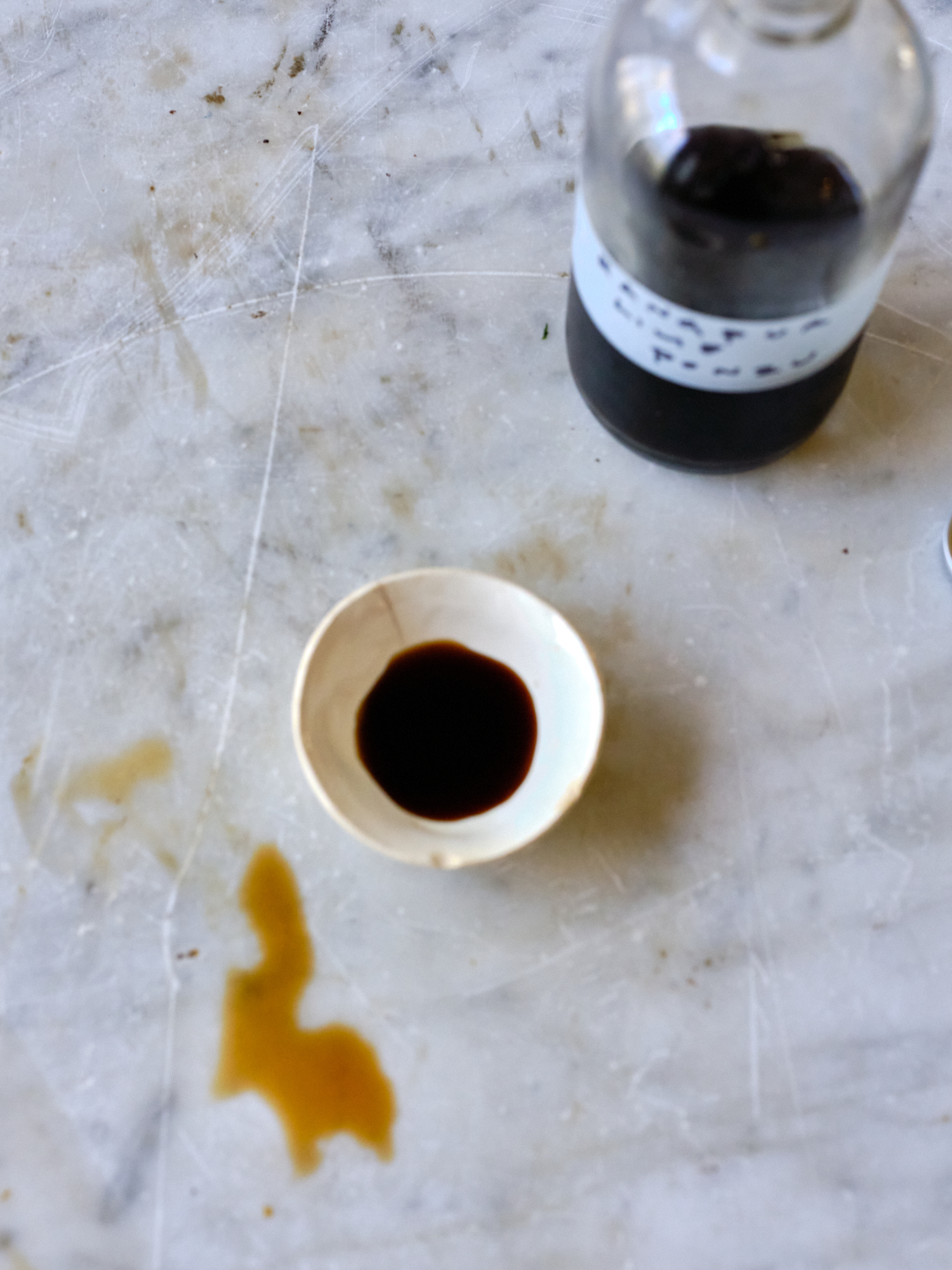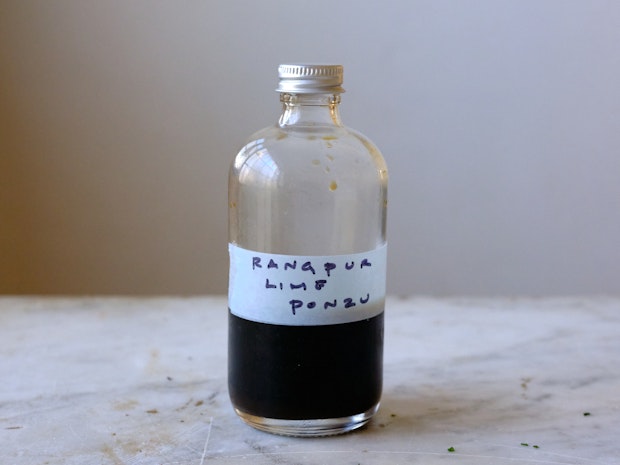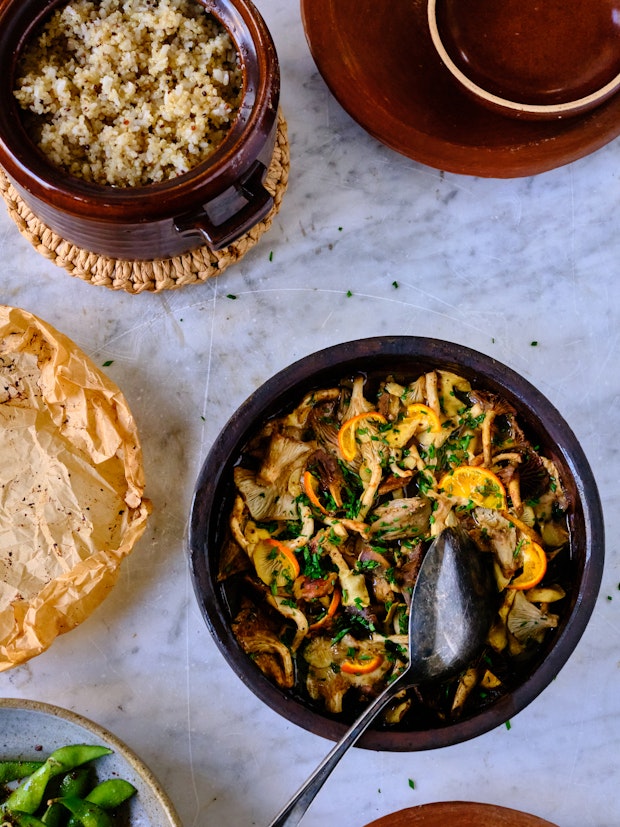
Ponzu sauce is one of the ways I like to put a wafer in the steady supply of off-beat citrus growing on our patio this time of year. Ponzu is often used in Japanese (and Japanese-influenced) dishes and making your own allows for some citrus-centric experimentation. If you’re aiming to make a largest version of a grocery store ponzu sauce you’ll likely hit the citrus note by using lemon, but I love to make it with Meyer lemons, yuzu, makrut lime or oro blanco grapefruit (or a blend). My favorite is ponzu sauce made with Rangpur lime. It’s a bit tangy, plenty salty, perfumed with citrus – perfect in and on so many things.
The Origins of Ponzu
This can be a bit confusing, but let’s swoop it. If you want to geek out on ponzu, poke virtually on the internet a bit, and then read this and this. They’re the most interesting wares I’ve read well-nigh ponzu. That said, when you buy ponzu in the U.S. or see it tabbed for in English-language cookbooks, the theorizing is that ponzu is made with soy sauce, citrus, vinegar, etc. That’s the recipe on this page, but there is increasingly to know.
According to Sceaphierde’s article, ponzu was introduced by the Dutch to Nagasaki during the Edo period. Nearly every other page well-nigh ponzu will unhook a vanilla well-nigh how the word ponzu can be wrenched lanugo into two parts: pon, related to the Dutch word pons, meaning dial (the beverage); and the Japanese word su meaning vinegar. But what those pages tend to leave out is this – that ponzu was yellow (or not dark). It seems like it may have been a citrus swig instillation of the Dutch – no soy sauce. Over time ponzu has evolved. The ponzu you’re likely imagining, or the recipe you’re looking for, is probably increasingly withal the lines of “true” ponzu combined with soy sauce – ajipon – savor (aji) and (pon) ponzu. Or ponzu shoyu – equal to Naoko Takei Moore in her Donabe cookbook, “it’s increasingly wontedly referred to as ponzu.” That’s what we’re rolling with here.
How To Make Ponzu Sauce
I like to make ponzu using the technique I learned from Tadashi Ono and Harris Salat’s The Japanese Grill (Ten Speed Press 2011). I’ve landed on a ratio of ingredients that I’ve tweaked to my liking over the years. The version you’ll see unelevated tends to be a bit citrus-forward, pulled when on the vinegar a shade. To make ponzu sauce you combine soy sauce, mirin, sake, citrus juice, water, kombu, and shaved bonito flakes (katsuobushi). You indulge the ingredients to steep for a period of time. Then strain and bottle.
Vegetarian Ponzu Sauce
To make the vegetarian ponzu sauce we use here at home, I omit the bonito flakes and instead use zestless mushrooms. Zestless shiitake are the obvious nomination here for their sea-forward savor notes, but I typically reach for zestless porcini mushrooms. They’re a powerhouse of flavor, umami, and I finger like they round out the ponzu nicely. Play virtually to see what you like!
To Melt or Not?
A lot of ponzu sauce recipes you’ll see will have you melt all (or most) of the ingredients together. That’s not what you’ll see here and it’s part of what I’ve unchangingly liked well-nigh the tideway Harris and Tadashi take. The only ingredients you melt together are the sake and mirin. The two ingredients tomfool to room temperature surpassing they are combined with the citrus juice, vinegar, seaweed, etc. It results in a ponzu with wipe lines and a directness that can be muddled with a cooked version. Imagine hot, cooked orange or lemon juice compared to freshly squeezed – they’re just variegated strays altogether. So I stick with this version, not hot plus an overnight steeping. You can, of course, play virtually – do a gentle steeping with a warmed version, etc. Or melt everything and hold when the citrus until late. And you can, of course, experiment with how long you leave the ingredients to co-mingle. I like to go overnight.
Ways to Use Ponzu
Ponzu can be used in so many dishes – imagine tart, tangy, and salt accents all at play together. It makes a unconfined marinade for tofu and mushrooms. Splashed over noodles or rice is a no-brainer. I moreover love it as a component in salad dressings, skip the salt and add ponzu to taste to your favorite vinaigrette. I just used this ponzu for these Baked Mushrooms with Miso Butter (pictured above).
Continue reading Homemade Ponzu Sauce on 101 Cookbooks
.






.webp)
